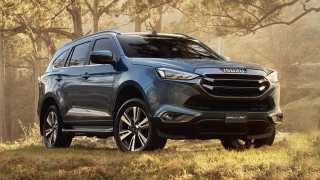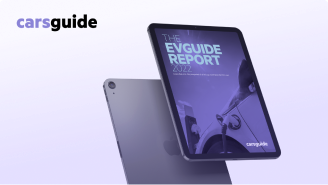
Volvo electric cars in Australia: Everything you need to know
- Volvo XC60
- Volvo XC90
- Volvo C30
- Volvo XC40
- Volvo C40
- Volvo Hatchback Range
- Volvo SUV Range
- Hatchback
- SUV
- Electric Cars
- Hybrid Cars
- Volvo XC60 Reviews
- Volvo XC90 Reviews
- Volvo C30 Reviews
- Volvo XC40 Reviews
- Volvo C40 Reviews
- Volvo
- EV Advice
- Volvo Advice
- EV
- EVs
- Electric
- Electric Cars
- Hybrid
- Hybrid cars
- Plug-in hybrid

Sweden has a fine history of world-beating brands - IKEA, Spotify, ABBA - but none has been around for as long as Volvo, the epitome of “safe and sensible”.
It may be a little less Swedish these days - Chinese multinational automotive company Geely Holding Group took ownership of Volvo in 2010 - but the brand will forever by synonymous with the land of meatballs, herring and blonde people.
Volvo ventured into the world of Electric Vehicles (EVs) with the Volvo C30 DRIVe Electric concept car (DRIVe, see what they did there?), which debuted at the 2010 Paris Motor Show.
The first full-electric Volvo road car, the Volvo C30 DRIVe Electric premium compact hatchback, came with an 82kW electric motor powered by a 24kWh lithium-ion battery pack, delivering a top speed of 130km/h and an all-electric range of up to 150km.
In a move by Volvo that firmly underlined its intention to market the car as a fuel-free vehicle with a low environmental impact, the Volvo C30 DRIVe Electric was involved in 2011’s Tonne Life project, which saw a family given the job of having to live as environmentally friendly as possible for a period of six months (they needn’t have been worried when those months got cold, either: the C30 was tested in winter conditions in temperatures as low as -20 °C).



Download the EVGuide Report, 2022
Australia's one-stop snapshot of all things relating to electric cars.
The Volvo C30 DRIVe Electric was only ever intended to be produced in small numbers, and thus was earmarked solely to be leased to corporate customers and government agencies.
As is the way with low-production models, the Volvo C30 DRIVe Electric car was discontinued in 2013, but not before achieving a small modicum of glory: it shared first place in the 130km Michelin Challenge Bibendum rally in Berlin in 2011, also scoring awards for handling, well-to-wheel carbon dioxide emissions and local emissions along the way.
It was a long time in between (electric) drinks for Volvo, with the first mass-market, commercial Volvo EV not appearing in Australia until 2021.
The Volvo XC40 Recharge is an all-wheel-drive mid-size SUV, coming in both all-electric and Plug-in Hybrid Electric Vehicle (PHEV) variants.
The C30 DRIVe Electric and XC40 Recharge Electric models aren’t Volvo’s only forays into vehicles using alternate fuel sources: in the past it has developed flexible-fuel vehicles (cars that run on gasoline blended with either ethanol or methanol fuel), the gas-turbine hybrid Volvo ECC (Environmental Concept Car), and “Drive E”, a line of vehicles with forced-induction four-cylinder engines.
Read more about Volvo XC40
- Volvo Concept Recharge previews next-gen XC90: Swedish taxi set to get EV-led design revolution to take on Tesla
- 2022 Volvo XC40 Recharge Pure Electric price and features: New EV plays value card to challenge Mercedes-Benz EQA and Audi Q4 e-tron
- 2022 Volvo XC90 price and features: Updated seven-seat BMW X5, Mercedes-Benz GLE and Audi Q7 rival arrives with hybrid-led range
Volvo EVs available in Australia

Volvo XC40 Recharge Electric
Price: $72,990, plus on-road costs
Although it comes with a reasonably high price tag, the Volvo XC40 Recharge Electric comes under the NSW Government’s threshold for the EV stamp-duty waiver, meaning drivers can joyously keep an extra $3000 in their pockets that they’d otherwise be spending on stamp duty (the Victorian Government also offers a $3000 rebate for EVs under $68,750, but it’s also introduced an EV road user tax of 2.5c per kilometre).
Safety features are a given with a Volvo, so let’s get down to brass tacks for this rival to the Tesla Model Y SUV: the XC40 Recharge Electric initially arrived packing two electric motors delivering a total of 300kW of power and 660Nm of torque, all powered by a substantial 78kWh battery that can deliver a driving range of up to 418km, but has since become available in a lesser front-wheel drive variant producing 170kW/330Nm.
Charging times vary depending on a number of factors, but a DC fast charger should see an empty battery get charged to 80 per cent in around 40 minutes.
There’s also a PHEV version available for $69,990 plus on-road costs, for those who aren’t ready to commit to an all-electric model just yet.
Volvo also currently has two other PHEVs available in Australia: the Volvo XC90 Recharge PHEV, a seven-seater, AWD SUV with an all-electric range of 44km ($118,990 plus on road costs), and the Volvo XC60 Recharge Plug-in Hybrid ($97,990 plus on road costs) a mid-size SUV with an impressive 90km all-electric driving range.
Volvo C40

The Volvo C40 is a new crossover which will serve as the brand's electric entry-point, and more SUV-focused equivalent of its sister brand's Polestar 2. The C40 will be a purely electric offering with a 78kWh battery granting 420km of range. It will also bring the latest version of the brand's operating system with an always-online Google-integrated suite of features. Expect it to use the same electric motors as both the XC40 and Polestar 2, capable of producing 170kW/330Nm in front-wheel drive form or 300kW/660Nm in all-wheel drive form. The C40 is scheduled to arrive before the end of 2022 in Australia.
The future of Volvo electrified vehicles
Volvo has stated that it plans on solely manufacturing electric cars by 2030, saying that there is “no future” for vehicles powered by harmful emissions-causing internal-combustion engines.
Taking a leaf out of Tesla’s playbook, Volvo has also said its range of fully electric models will only be available online by 2030, which is good news if you have an internet connection, and not so great if you don’t.
Volvo has also predicted half of its global sales will be fully electric by 2025, with the rest being hybrid models.
With plans to drop a cool billion annually on electrification and autonomy, expect a slew of Volvo EVs to soon start coming down the pipeline.











Comments